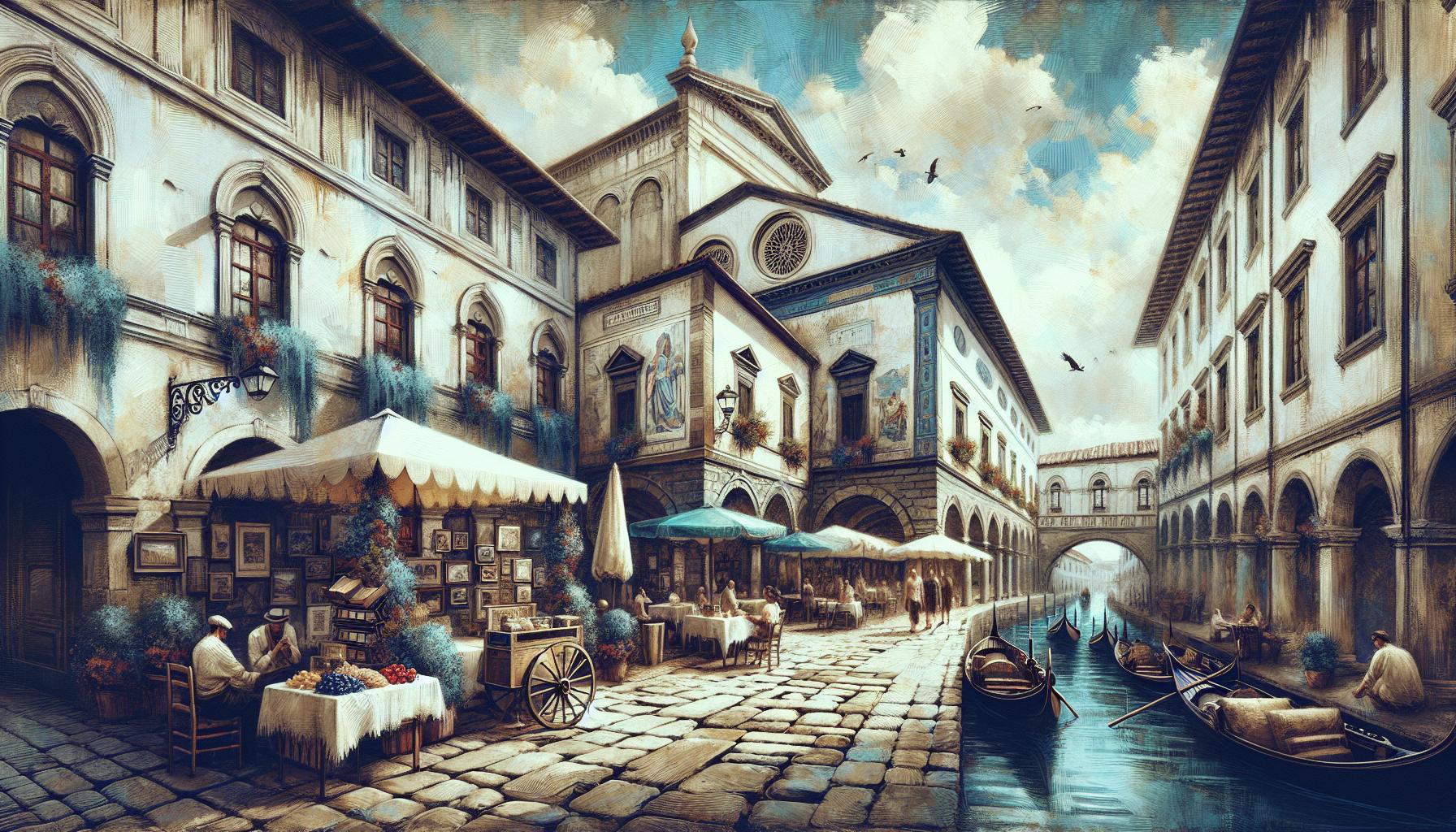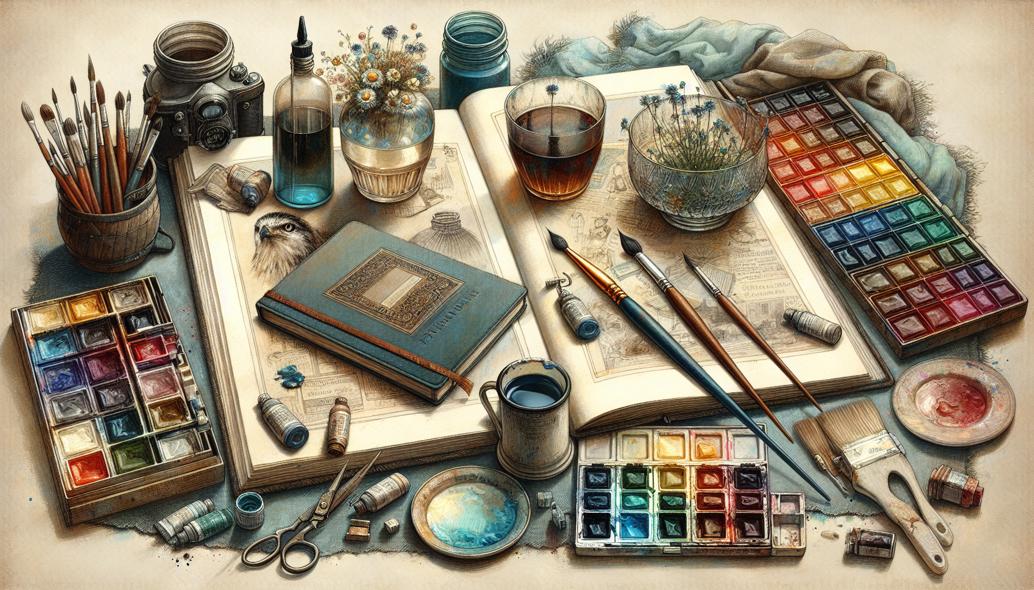Exploring Mixed Media - Combining Oil, Watercolor, and Drawing
Dive into the exhilarating world of mixed media art by combining oil, watercolor, and drawing. Learn advanced techniques to seamlessly integrate these mediums, enhancing texture and depth in your artwork. Transform your creative process and discover endless artistic possibilities!

Exploring Mixed Media - Combining Oil, Watercolor, and Drawing
Mixed media art stands as a testament to the boundless potential of artistic expression. By integrating various mediums such as oil painting, watercolor, and drawing, artists are able to push the boundaries of creativity, texture, and depth. In this post, we'll delve into advanced techniques for combining these mediums to create truly unique mixed media artworks. Whether you're an experienced artist or a curious novice, this guide aims to provide you with expert-level insights into mixed media artistry.
The Magic of Mixed Media
Mixed media art allows the artist to exploit the intrinsic properties of different materials for added complexity and enhanced visual impact. By juxtaposing oil paints' rich texture with watercolor's ethereal transparency and drawing's sharp clarity, artists can create dynamic compositions unattainable by using a single medium. The essence of mixed media lies in the thoughtful integration of these materials, achieving a harmonious balance while maintaining the distinct characteristics of each medium.
Preparing Your Canvas
Before diving into your mixed media project, it’s crucial to prepare your canvas properly. The choice of base material can significantly impact the final outcome. Common substrates include canvas, watercolor paper, or wood panels. Each offers unique benefits:
- Canvas: Ideal for its durability and strength, allowing multiple layers of heavy oil paints and drawing materials.
- Watercolor Paper: Excellent for handling liquid media, offering a textured surface that enhances watercolor and ink.
- Wood Panels: Strong and versatile, they provide a sturdy foundation for mixed media works involving significant layering.
Once you've chosen your substrate, it's advisable to apply a gesso primer. This enhances the surface's ability to accept multiple types of media, maintaining their vibrancy and bonding strength.
Combining Oil Paints with Watercolors
One of the most striking combinations in mixed media art involves using oil paints and watercolors together. However, the two mediums inherently resist each other due to their differing bases—oil being hydrophobic and watercolor being water-based. Here’s how to dance around this challenge:
- Lay Down Watercolors First: Start with a watercolor layer. Watercolors dry quickly and can serve as a luminous underpainting, providing a vibrant base over which you'll later apply oil paints.
- Allow Complete Drying: Ensure the watercolor is completely dry before applying any oil layers. This avoids unwelcome interactions between the two mediums.
- Apply Oils Selectively: Use oil paints to accentuate specific areas of the composition. Their thick, rich texture can add depth and focus, contrasting beautifully with watercolor’s fluidity.
Integrating Drawing Techniques
Drawing is a versatile medium, bridging the gap between watercolors and oil paints. The precision of graphite, charcoal, or ink can delineate forms, create texture, and add intricate details. To achieve a balanced integration of drawing with oil and watercolor:
- Layering Sequence: Start with your drawing as the foundation layer. Use light and expressive lines that outline the main elements of your composition.
- Watercolor Overlay: Apply a watercolor wash over the drawing. Transparent watercolors will let the drawing lines subtly show through, merging the two mediums.
- Oil Detailing: Add oil paint for final enhancements. Its opacity can obscure areas you wish to emphasize or edit.
Advanced Techniques and Tips
To achieve a successful mixed media piece, experimenting with and refining your techniques are key. Below are some advanced tips for integrating these three primary mediums:
- Textured Grounds: Before applying watercolors, create a textured ground using gesso mixed with sand or other granular materials. This offers a gripping surface for watercolors and oil paints.
- Oil Pastels as Intermediaries: Oil pastels can act as a bridge between watercolor and oil paint. While watercolors resist oil pastels, pastels hold oil paint effectively. Use them to map out areas where you’ll transition between watercolors and oil paint.
- Fixative Sprays: To prevent smudging and smearing, especially with charcoal or graphite underdrawings, use a fixative spray. This ensures your initial lines remain crisp and define your composition throughout the layering process.
- Oil Glazing Over Watercolors: Apply translucent oil glazes over dry watercolor to achieve a stained-glass effect. This technique harnesses the luminosity of both mediums, creating areas of intense light and shadow.

Sealing and Finishing
The final step in any mixed media artwork is essential for ensuring its longevity and durability. Use varnishes suitable for mixed media works to seal and protect your piece. Remember:
- Compatibility: Choose a varnish that is compatible with all the media used in your artwork.
- Layers and Drying Time: Apply several thin layers of varnish, allowing each to dry completely before the next application.
- UV Protection: Opt for UV-protective varnishes to prevent fading from sunlight.
Conclusion
Exploring mixed media by combining oil, watercolor, and drawing is an exhilarating journey that leads to captivating, multidimensional art. By understanding the unique properties of each medium and mastering their integration, you'll be able to create artworks that are not only visually striking but also structurally sound. Embrace the endless possibilities these materials offer, and let your creativity flow beyond traditional boundaries.
The adventure lies in experimentation and finding your unique voice in the diverse world of mixed media. Happy creating!
